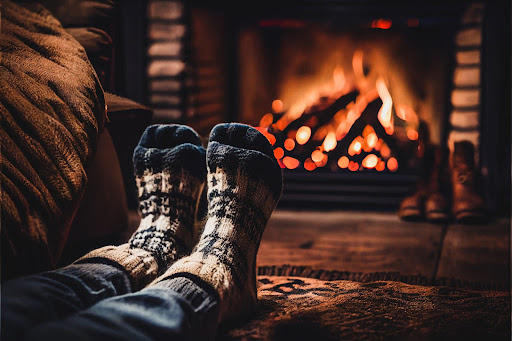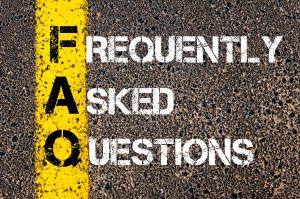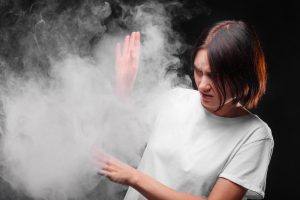Are creosote self-cleaning logs the answer to fireplace woes? Maybe it’s an easy way to keep that chimney clean and make those cold winter mornings bearable, or maybe it should be avoided with caution. Before stocking up on logs, let’s separate fact from fiction and discuss what these self-cleaning logs are all about—the good, the bad, and if they’re actually helpful or harmful for chimneys.
How Do Creosote Self-Cleaning Logs Work?
The Need-to-Know About Creosote
First, let’s define creosote. This tarry, black substance sticks to the walls of a chimney as a result of burning wood and can be flammable if it builds up in large enough quantities.
Fuels like hardwood, softwood, and compressed logs release various by-products, such as smoke, water vapor, hydrocarbons, and tar fog while burning in a fireplace. When these substances escape through the chimney (which is cooler), they condense on the inner surface of the chimney and create a sticky residue called combustible creosote and tar. To keep a chimney clean, it’s important to have it inspected annually and have any creosote removed by a professional.
According to the National Fire Protection Association, the leading factor contributing to home heating fires (30%) was having a dirty chimney (i.e., creosote buildup). These fires are completely preventable with regular chimney maintenance!
When Is Creosote Buildup Serious?
Creosote buildup can be a serious fire hazard, so it’s important to take steps to prevent and remove it. There are different stages of creosote buildup, and if left unchecked, it can eventually form a layer of glazed creosote, which is the most combustible type.
Stage I Creosote: This is the most common type of creosote and is characterized by a flaky or powdery layer. It can be safely removed with regular chimney cleaning but should not be ignored.
Stage II Creosote: This type of creosote is darker and shinier than stage I and has a tar-like consistency. If this type of creosote is present, it should be professionally removed to avoid any fire hazards.
Stage III Creosote: This is the most dangerous type of creosote and is usually jet-black in color and glossy or shiny. It’s highly combustible and should be removed immediately by a trained professional.
About Creosote Self-Cleaning Logs
Now, let’s talk about creosote self-cleaning logs. These logs burn at an increased temperature compared to traditional wood-burning logs, which can help break down built-up creosote in the chimney walls. Many brands of self-cleaning logs are designed to be used on an as-needed basis, meaning they should only be burned as needed once or twice a year. Burning these logs more often may lead to damage to the chimney or even fire hazards.
Creosote self-cleaning logs are made from a variety of natural ingredients and chemical accelerants, which helps raise the burn temperature. Some logs contain sawdust mixed with wax or other substances with a higher burning point than traditional wood-burning logs. Other types may contain paraffin wax, sodium nitrate, or charcoal briquettes. The idea is that by burning these logs at higher temperatures, creosote within a chimney will be burned off sooner or avoided altogether. These logs are also designed to release additional chemicals that supposedly enhance the cleaning process.
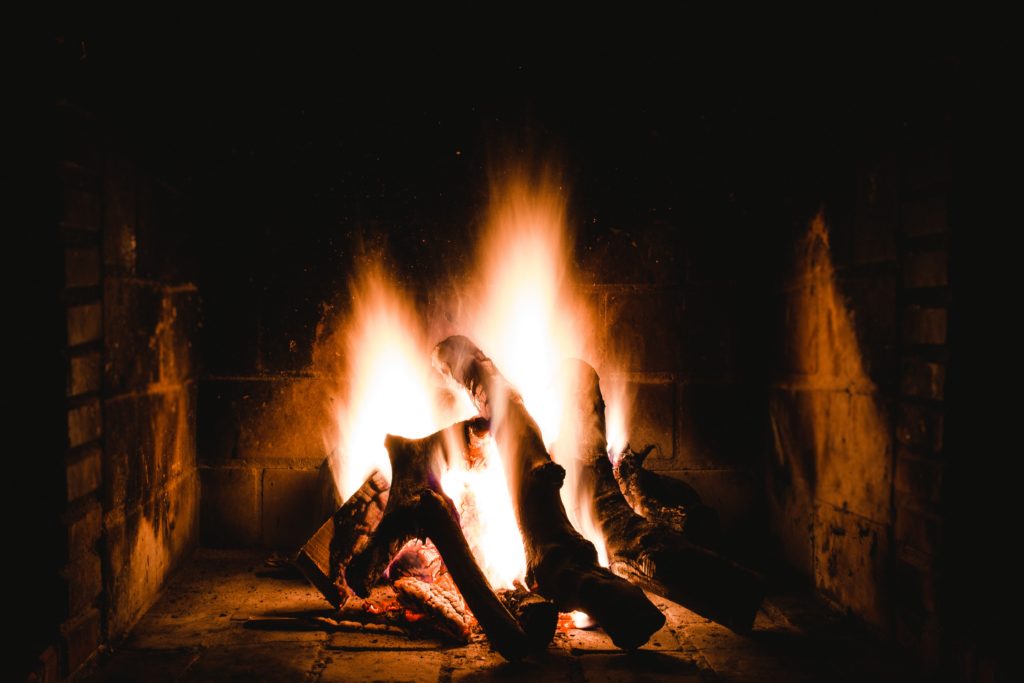
Are Creosote Self-Cleaning Logs Helpful or Harmful?
Now comes the million-dollar question: Are these logs safe and effective? Unfortunately, there isn’t a clear answer as to whether or not these logs are helpful or harmful for chimneys. Though some chimney sweeps may recommend them, there’s no scientific evidence that these logs actually clean creosote out of a chimney.
In fact, some experts caution against using these logs as they can cause damage to the chimney or even fire hazards if not used correctly. The higher burning temperature released from creosote self-cleaning logs can actually cause further creosote buildup if used improperly or too often.
In short, it’s best to consult a professional chimney sweep before using these logs to ensure they are safe and effective for a fireplace and chimney. Overall, regular maintenance and inspections are key to avoiding the dangers of creosote buildup.
Takeaways About Self-Cleaning Logs:
- Self-cleaning logs should never be used as the primary source of heat during cold winter months.
- These logs do not replace the need for annual chimney inspections and cleanings.
- Burning these logs can increase the risk of a chimney fire if used too often or in combination with other fuels such as coal or wood pellets.
- The use of these logs can lead to an accumulation of ash in the flue, which can cause dangerous blockages and reduce ventilation.
- Self-cleaning logs may also emit hazardous fumes and gases, so it’s important to make sure the room is properly ventilated when burning them.
- Some brands of self-cleaning logs may contain additives that are potentially hazardous to our health and the environment.
The Bottom Line
Creosote self-cleaning logs can be helpful in reducing creosote buildup, but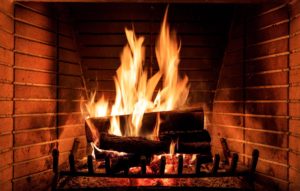 they should be used in moderation and only as a supplement to regular chimney inspections and cleanings. It’s also important to read the directions carefully before using self-cleaning logs and make sure the room is properly ventilated during burning.
they should be used in moderation and only as a supplement to regular chimney inspections and cleanings. It’s also important to read the directions carefully before using self-cleaning logs and make sure the room is properly ventilated during burning.
Ultimately, the decision to use these logs or not should be based on personal preference and needs. However, it’s important to remember that these are just one tool for helping keep a chimney clean and safe—annual inspections and cleanings by a certified professional should never be replaced or neglected.
Better Ways to Remove Creosote
The best way to remove built-up creosote from a chimney is still a professional cleaning. Certified technicians have the tools and experience necessary to safely remove creosote and other debris from a chimney while also inspecting it for any potential problems or hazards. Additionally, regular inspections can help ensure that the firebox and flue are in good condition and that the chimney is properly ventilated.
Preventing Creosote Buildup
In addition to regular inspections and cleanings, there are a few other ways to prevent creosote buildup in a chimney.
- Burning only dry, seasoned wood is one of the best ways to reduce creosote formation, as unseasoned or green wood can create more smoke and cause it to stick to the walls of the chimney.
- Burning smaller fires can help prevent creosote buildup as well.
- Finally, keeping the damper open and fully extended when lighting a fire can also help reduce smoke and the resulting creosote formation.
Preventing Chimney Fires
Chimney fires are a serious threat and can be caused by built-up creosote, but there are also other factors that increase the risk.
- Make sure never to burn any type of flammable materials in the fireplace, such as cardboard boxes or wrapping paper.
- Avoid burning items like pine cones or Christmas trees that can cause sparks to fly up the chimney and ignite any built-up creosote or debris.
- Finally, keep the fireplace clean and clear of any debris or combustible materials that could catch fire.
- Taking these precautions can help reduce the risk of a chimney fire and keep the home safe.
As professional chimney sweeps, we don’t mess around with creosote buildup and take extra care to make sure our chimneys are safe and up to code. If in need of an inspection or cleaning, give us a call today! We’re always happy to help.
In conclusion, creosote self-cleaning logs can be helpful in reducing the build-up of creosote, but they should not be used as a replacement for professional cleaning. For best results, all chimneys should be inspected annually and cleaned when necessary by certified technicians.

